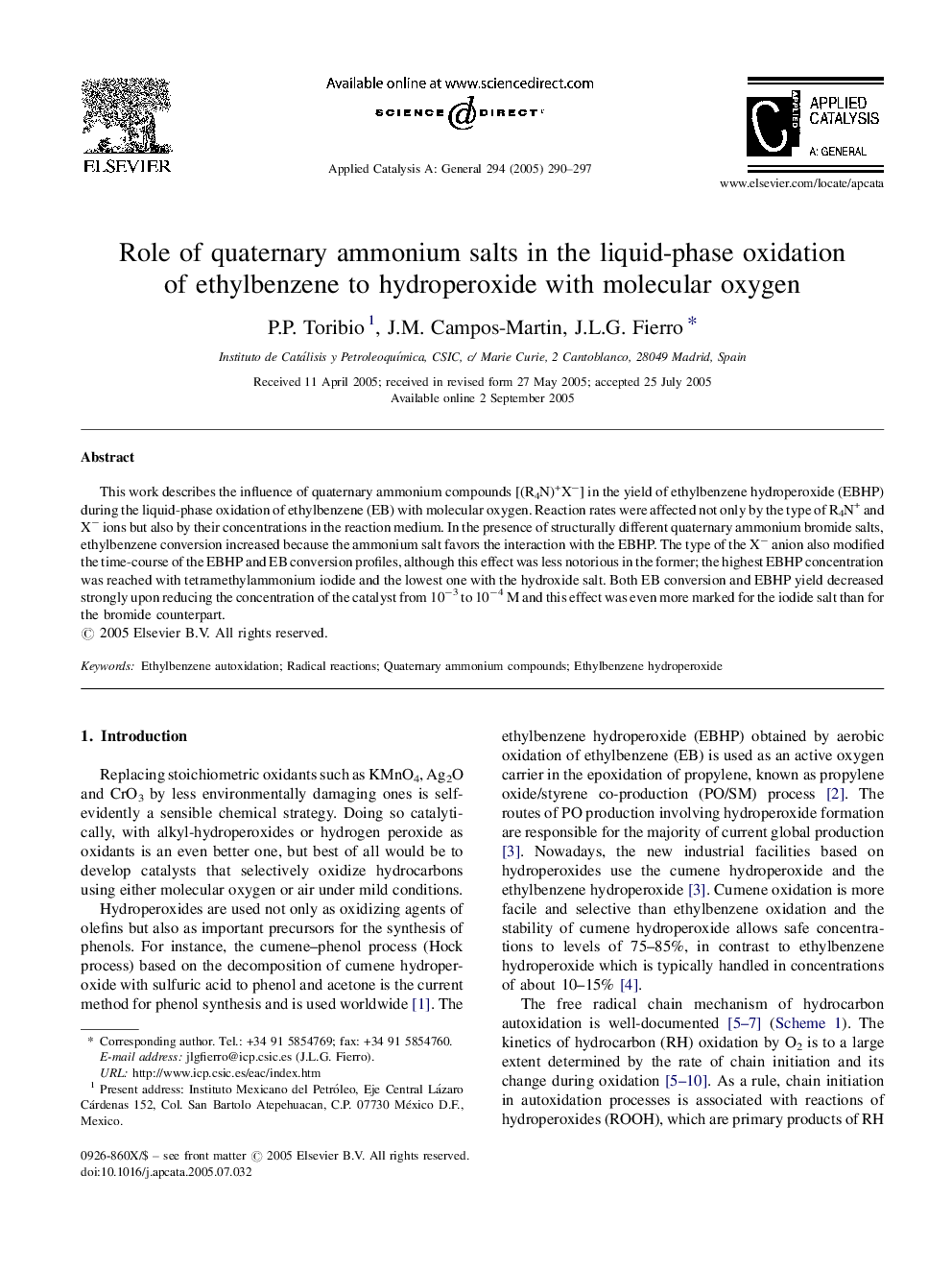| Article ID | Journal | Published Year | Pages | File Type |
|---|---|---|---|---|
| 10238993 | Applied Catalysis A: General | 2005 | 8 Pages |
Abstract
This work describes the influence of quaternary ammonium compounds [(R4N)+Xâ] in the yield of ethylbenzene hydroperoxide (EBHP) during the liquid-phase oxidation of ethylbenzene (EB) with molecular oxygen. Reaction rates were affected not only by the type of R4N+ and Xâ ions but also by their concentrations in the reaction medium. In the presence of structurally different quaternary ammonium bromide salts, ethylbenzene conversion increased because the ammonium salt favors the interaction with the EBHP. The type of the Xâ anion also modified the time-course of the EBHP and EB conversion profiles, although this effect was less notorious in the former; the highest EBHP concentration was reached with tetramethylammonium iodide and the lowest one with the hydroxide salt. Both EB conversion and EBHP yield decreased strongly upon reducing the concentration of the catalyst from 10â3 to 10â4Â M and this effect was even more marked for the iodide salt than for the bromide counterpart.
Related Topics
Physical Sciences and Engineering
Chemical Engineering
Catalysis
Authors
P.P. Toribio, J.M. Campos-Martin, J.L.G. Fierro,
